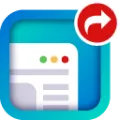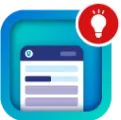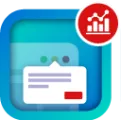Add Console Components to Page Layouts in Salesforce Classic
- From the object management settings for the object whose page layout you want to edit, go to Page Layouts.
- Click Edit next to a page layout.
- Click Custom Console Components.
- Next to the sidebar in which you want to add your component, choose how to display and organize your components by Style. See Sidebar Styles for Console Components in Salesforce Classic.
- Specify the size of the sidebar in the console by selecting height or width, and typing its percentage or number of pixels. When the height or width of the sidebar is below the following number of pixels, these components types automatically hide because they become too difficult to read:Knowledge One - 250Lookups - 150Related lists - 200Report charts - 150Community 360 - 400
- Knowledge One - 250
- Lookups - 150
- Related lists - 200
- Report charts - 150
- Community 360 - 400
- Under Type, choose whether your component is a Visualforce Page, Canvas App, Lookup, Related List, or Report Chart. Before you can choose a Report Chart, add it to the page layout and make sure it’s in a folder that’s shared with users who need access.If the Knowledge tab is set up in your Salesforce org, add the Knowledge One component to case pages so agents can easily find and work with articles.If your org uses entitlement management, add the Milestone Tracker to case pages so agents can see the latest information on milestones related to cases they’re working with.If you have topics enabled for an object, add the Topics component so users can view, add, and delete topics on the records they’re working with.Add the Files component to case pages so support agents can use drag-and-drop to quickly attach files to cases, see files that are already attached, and include attached files to case emails.If your org uses Knowledgeable People and topics on objects, add the Case Experts component to case page layouts so agents can easily collaborate with colleagues who have expertise in specific areas.Note Case Experts is available through a pilot program. For information on enabling Case Experts for your org, contact Salesforce.Add the Community 360 component if you’ve enabled Community 360 in a community, and assigned it to the correct profiles. Since page layouts are limited to two report charts, you can add up to two report charts to a sidebar. You can add up to five components to a sidebar and a maximum of eight components to a page layout. Any canvas app components you add can’t be added to AppExchange packages.
- If the Knowledge tab is set up in your Salesforce org, add the Knowledge One component to case pages so agents can easily find and work with articles.
- If your org uses entitlement management, add the Milestone Tracker to case pages so agents can see the latest information on milestones related to cases they’re working with.
- If you have topics enabled for an object, add the Topics component so users can view, add, and delete topics on the records they’re working with.
- Add the Files component to case pages so support agents can use drag-and-drop to quickly attach files to cases, see files that are already attached, and include attached files to case emails.
- If your org uses Knowledgeable People and topics on objects, add the Case Experts component to case page layouts so agents can easily collaborate with colleagues who have expertise in specific areas.Note Case Experts is available through a pilot program. For information on enabling Case Experts for your org, contact Salesforce.
- Add the Community 360 component if you’ve enabled Community 360 in a community, and assigned it to the correct profiles.
- Under Component, set the details:For Visualforce pages or canvas apps, click under Component to find and select your component.Tip You can include Lightning components in Visualforce pages. See Lightning FAQ.If your component is a lookup field, related list, or report chart, choose the field, list, or chart’s name. Optionally, you can add more fields to look up components by defining objects’ mini page layouts. You can also hide report charts and related lists from pages where they appear as components to prevent duplicate information from showing. If you want to reorder related lists, do so from page layouts. Related list components don’t display custom buttons.
- For Visualforce pages or canvas apps, click under Component to find and select your component.Tip You can include Lightning components in Visualforce pages. See Lightning FAQ.
- If your component is a lookup field, related list, or report chart, choose the field, list, or chart’s name. Optionally, you can add more fields to look up components by defining objects’ mini page layouts. You can also hide report charts and related lists from pages where they appear as components to prevent duplicate information from showing. If you want to reorder related lists, do so from page layouts. Related list components don’t display custom buttons.
- Under Label, type the name for your component to display to console users from the sidebar. If you don’t type a label for a report chart, the report chart’s name is used.
- Specify the size of the component in the sidebar by selecting height or width, and typing its percentage or number of pixels. If you don’t specify a height or width, the component is automatically sized to appear correctly in a console.Autosize Components is available for components with the Stack style.It’s selected by default so that when users resize browsers, Stack components fit nicely insidebars. Salesforce chooses a minimum height and width for Stack components, and you can’tchange those values. The fit-automatically option is unavailable for Visualforce pages, andcanvas apps.
- Click Save.





